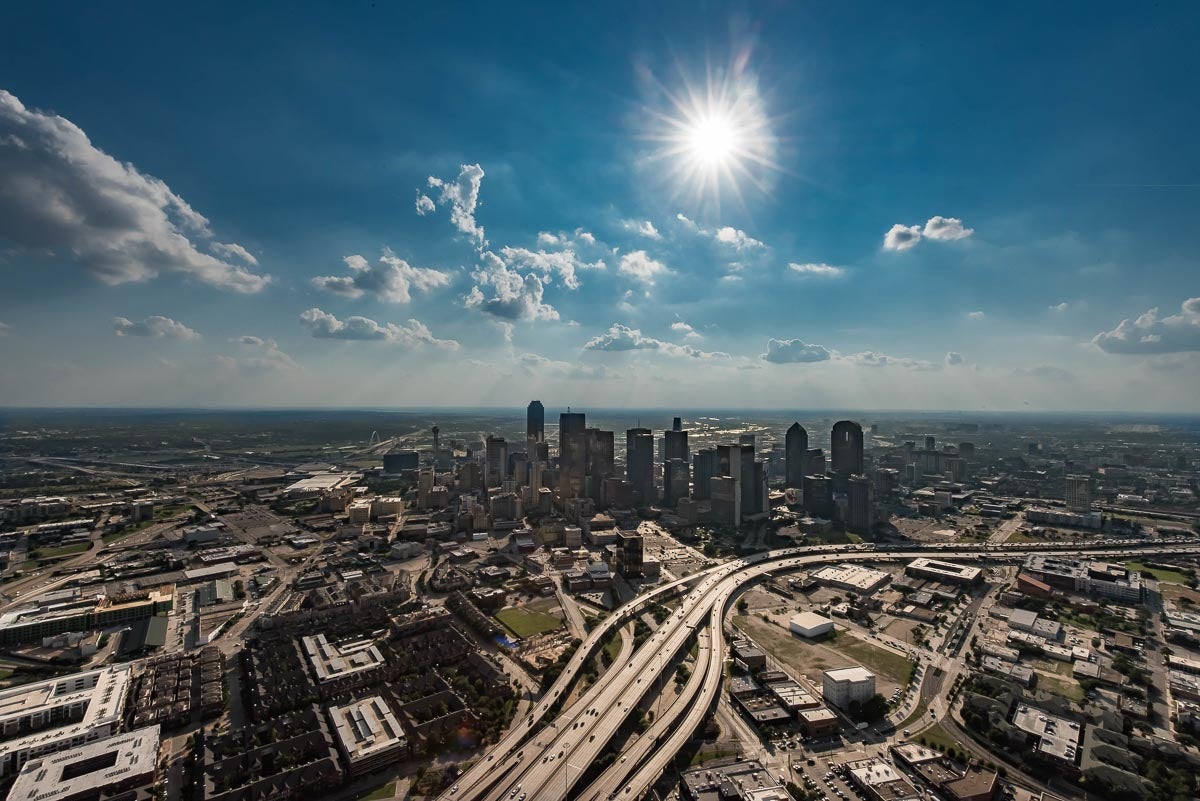The two Texas highways are among the ten American expressways identified in the Freeways Without Futures 2019 report from the Congress for the New Urbanism.
"As this decade comes to an end, cities and their freeways are at a crossroads," the researchers say in the report. "Limited-access highways that were built through cities in the 1950s through 1970s are now at the end of their useful life, and cities must decide whether to rebuild."
To remedy the current issues with Texas' I-35 and I-345, the report provides suggestions to improve the current roadways.
For I-35, which was completed in 1962, the report notes the total removal of the freeway is infeasible due to the level of interregional traffic. However, since the highway hinders travel between East and West Austin, the report endorses changes recommended by grassroots campaign Reconnect Austin, which include:
- Remove the elevated highway between Cesar Chavez Street and Martin Luther King Jr. Boulevard.
- Remove existing highway frontage roads to reclaim 30 acres of downtown land, which can be used for up to 4,500 affordable housing units and open the land for mixed-use development to increase the tax base for local jurisdictions by millions of dollars.
- Bury this section of I-35 below ground.
- Cover the depressed lanes with a new, narrower, pedestrian- and bicycle-friendly boulevard.
The report encourages the Texas Department of Transportation to capitalize on the $8.1-billion renovation of a 66-mile stretch of I-35 in and around Austin in order to make the changes listed above.
Dallas' I-345, which was completed in 1973, is "an imposing concrete barrier that divides the city's historic Deep Ellum neighborhood from downtown and has spawned vacant lots and disinvestment along its 1.4-mile path," the report says, and removing the freeway would "generate significant economic development."
TxDOT's assessment of the freeway suggests two possible transformations: One replaces the elevated highway with a tunnel and a surface boulevard, and the other with only a surface boulevard. Critics say the tunnel system is unnecessary and would cost between $900 million to $1.2 billion to complete, while the surface boulevard would cost approximately $65 million.
The conversion of the freeway to a boulevard would open up 245 acres of land for potential development, $2.5 billion in new property value and $80 million each year in tax revenue. If city planners were to opt for the tunnel-boulevard combination, the economic benefits would lower by millions of dollars.
Ultimately, the report challenges these questions: "Do we continue to funnel billions of taxpayer dollars into an aging system that pollutes cities, divides neighborhoods, and occupies valuable land that could instead be used for homes and businesses? Or is there an alternative solution that creates stronger cities and communities? What are the core principles that new plans for former highway corridors should observe?"
The report answers these questions with: cities must strive to design for people rather than travel times for vehicles; cities must offer alternative options to driving; and cities must understand who should benefit from the landscape changes, whether it be developers or the city's most vulnerable residents.

